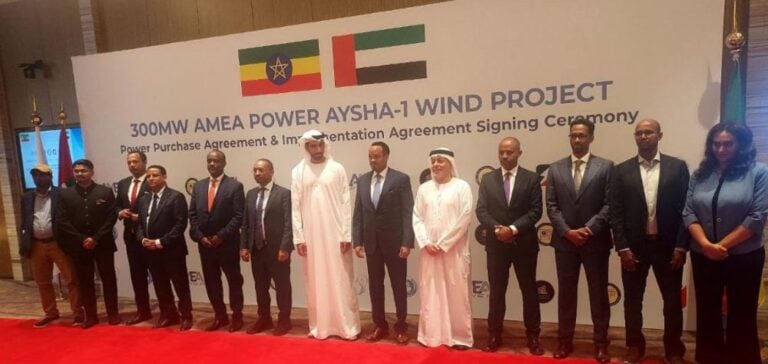AMEA Power, a company based in the United Arab Emirates, signs a key agreement with Ethiopian Electric Power for the construction and operation of a 300 MW wind farm in the Somali region of Ethiopia.
The project, known as Aysha-1, is the largest wind farm in the Horn of Africa, with a planned annual capacity of 1,400 GWh.
The energy produced will be enough to power around 4 million homes, making a significant contribution to the country’s decarbonization objectives. The agreement, signed at COP28 in Dubai, strengthens cooperation between the public and private sectors in Ethiopia.
AMEA Power, as a key player in the project, will finance and carry out the construction work, as well as operating the facility.
Ethiopian Electric Power, for its part, will purchase the electricity generated under a long-term Power Purchase Agreement (PPA).
An integrated energy strategy
The development of Aysha-1 is part of Ethiopia’s strategy to diversify its energy mix.
The Ethiopian government, through reforms favoring public-private partnerships, is striving to attract foreign investment to support the growth of its energy sector.
AMEA Power’s involvement in this project marks a new stage in its expansion on the African continent, where demand for renewable energies continues to grow. The implementation of this wind farm is not limited to electricity production.
It also aims to create a positive socio-economic impact in the region.
Over 1,500 direct jobs will be created during the construction and operation phases, boosting the local economy.
Environmental and social impact
Aysha-1 will reduce annual CO2 emissions by around 690,000 tonnes, a figure that underlines the importance of this project for Ethiopia’s climate ambitions.
This reduction comes at a time when the country is seeking to become a model for energy transition on the African continent.
AMEA Power is also committed to investing in local community development initiatives, particularly in the fields of education and access to water.
These actions aim to ensure that the benefits of the project are shared equitably with local communities, while contributing to their sustainable development.
By signing this agreement, AMEA Power and Ethiopian Electric Power are consolidating a strategic partnership that should have a lasting impact on Ethiopia’s energy landscape, and more broadly on that of the region.
The Aysha-1 project is set to become a benchmark for future energy infrastructure initiatives in Africa.






















